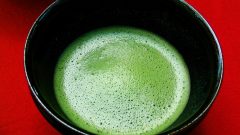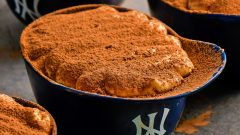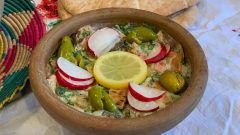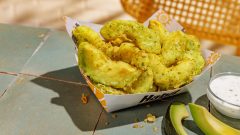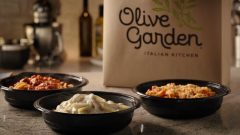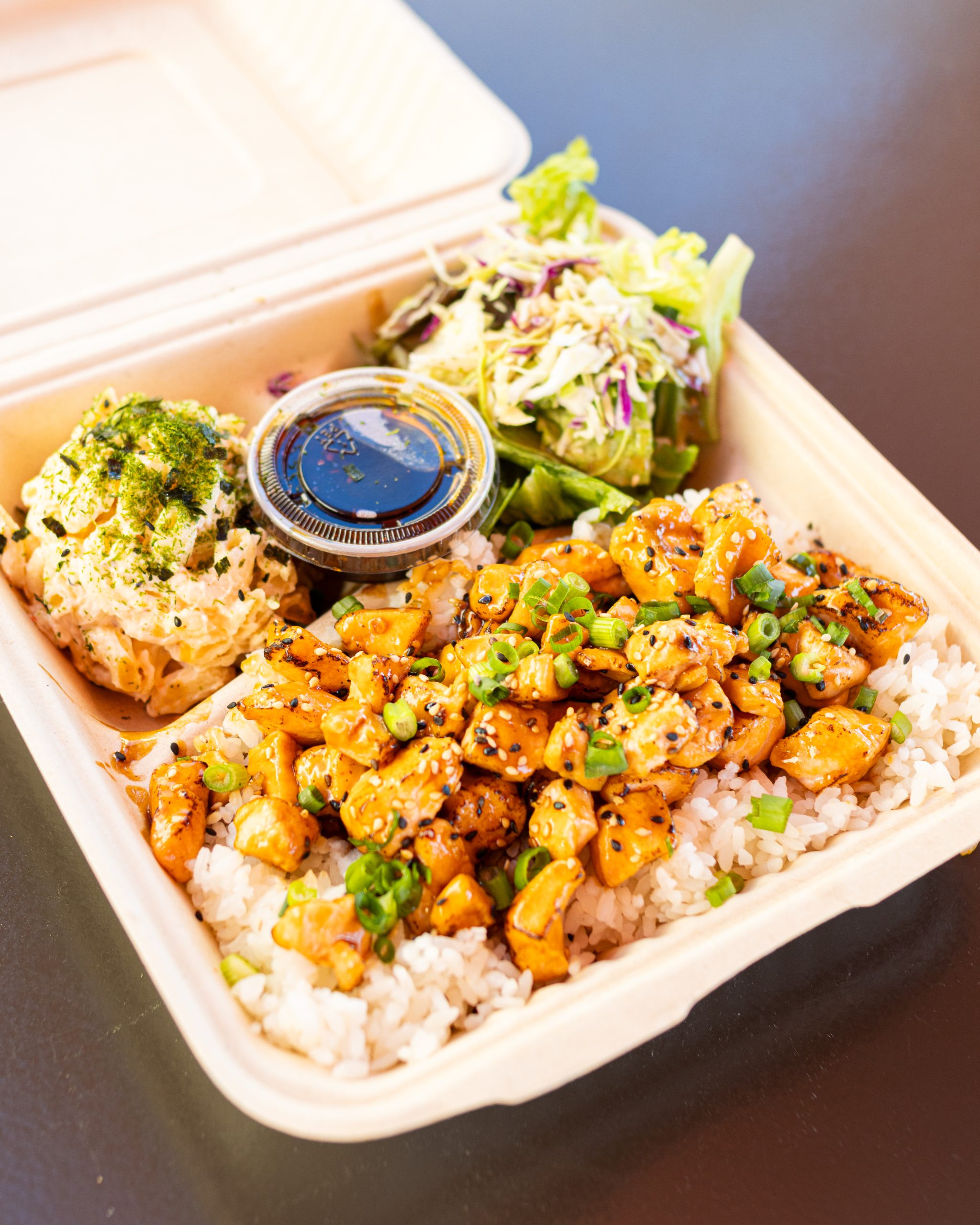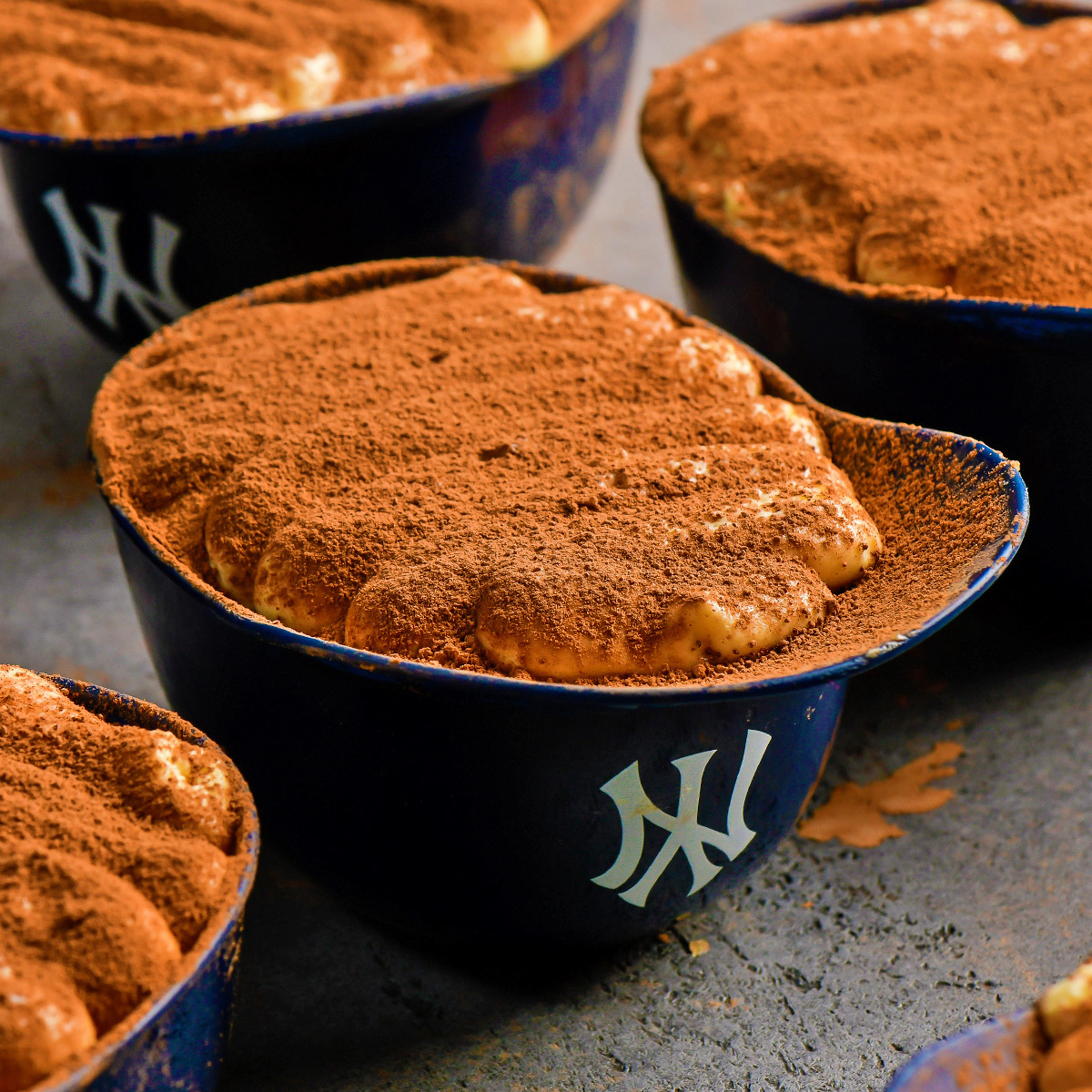This Chef Is Taking Next Level DIY Techniques To Create Innovative Dishes At LA’s Freshest Sustainable Seafood Shop
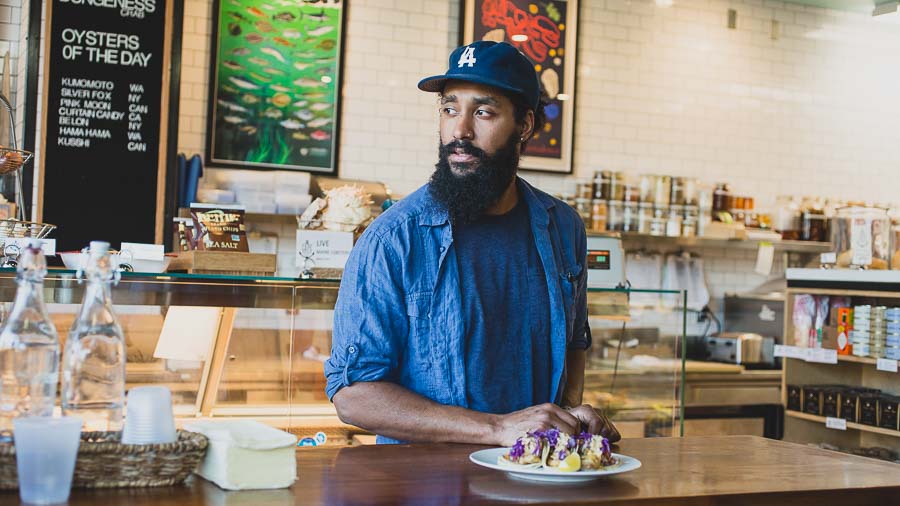
“Here, check this out. I’ve been fermenting it for over a year now.”
I was hesitant at first, eyeballing a container in front of me that was filled with a stimulating funk that introduced its presence to my olfactory senses no different than DMX barking in a megaphone to wake me up at 5AM — in a good way, if you would believe it.
Chef Brandon Gray, culinary director at Cape Seafood & Provisions in Los Angeles, CA, is next to me, beaming with pride at the concoction he was offering. Here at Cape Seafood is where Gray treats the shop’s sustainable seafood expertise as the playground where he plays with, and ultimately perfects, all of the concepts and techniques constantly swimming in his head. The majority of which center on a common thread of making whatever’s old, delectably new. This is curing and fermentation at its absolute finest and most madcap.
Surveying my surroundings I noticed shelves of various jars containing a motley selection of brews and mixtures that could very well have been potions and elixirs, spawning a scene that was more kooky laboratory than polished kitchen. I drag my gaze through each container and marvel at their contents: vibrant clouds of resonant substance swimming in liquified clouds, mellifluous compounds of suspended matter, and labeled unidentifiable goods that dated back months.

Intrigued at how a chef actually put the same amount of time into one food item that it takes for babies to develop social skills, I tasted a few drops of the intoxicating stuff and was blown away by the complexity and unique brininess that had registered onto my palate.
“It’s fish sauce! I used the heads and the guts that you normally throw away in the trash. I thought, ‘Hey let’s do something with this’. So I did a little bit of research on that, and found out that if you throw a little salt on top of it and let it sit for a year and strain it after, you get fish sauce. It’s all about being respectful of the product and not being wasteful.”
There’s a flash of passion in his eyes that was more flame than glint as he said all of this, to which I urged him to highlight further. If one of his fermentation techniques involved a one year commitment, I couldn’t wait to hear more about what other seafood sorcery he could wield and what drives and influences such a dedicated approach to food.
“There’s just so much knowledge out there in the world. The more you read the more you find out about the history, this that and the third. That’s what I love about food. It’s like there was one idea that was right here, but it could’ve started thousands of years ago, and that interests me,” Gray gushed.

It’s that concentrated curiosity that leads to Cape Seafood as a hub for not only the freshest sustainable seafood in the city, but also some one-of-a-kind techniques and processes that Gray applies to everything, from salting and curing fish in-house to composing bottarga from scratch and then even making his own katsuoboshi — the traditional Japanese boiled, cured, fermented, and smoked bonito fish, a task that’s a daunting DIY affair for any seasoned chef. He even does a pastrami-cured salmon that serves as a fine ode to Langer’s. Fiercely creative dishes like these help define the spirit of what’s going down at Cape Seafood and draw attention to the level of detail and labor that goes into creating something new and re-animated, if you will, from processes that literally hinge on aging and time.
Speaking on the process of fermentation, Gray discloses, “I think you ultimately have to follow some blueprint, but it’s about adding a special ingredient to make it your own. For preserved lemons, most people just use salt and some spices, but for the preserved lemons I’m doing here, I thought ‘Why not boost it up a notch?’ So why not lemon verbena inside of preserved lemons? It just gives it a very unique taste. That’s what I think every chef wants to do, make a product that everyone knows about but wants to put their own little spin on it.
But the surprising scene-stealer is a rich, pungent Bengali chutney that serves as the unlikely star component to his irresistible fish tacos that have the likes of Seth Rogen and Amy Schumer coming back on the regular.

“We make that base, it’s called kasundi, a Bengali chutney. It’s got a lot of Indian spices like turmeric, chili powder, mustard seeds, jalapenos, ginger, garlic, and you stew this mixture for four to five hours and you get this fortified, thick paste. Then we mix it into creme fraiche as the spicy crema for the tacos. It’s beautiful, it’s spicy, it’s sweet and kind of vinegary as well.”
At the heart of the year-long fish sauces and DIY katsuoboshi that’s created with painstaking detail and care is a respect for ingredients that takes inspiration from Japanese culture and the artisanal crafts that Chef Gray grew a fondness and respect for.
“They take so much passion in one ingredient and try to perfect it. There can be one guy making soy sauce for his entire life and it’s been in his family for hundreds of years. There’s something so beautiful about that. You can have a menu that has thirty items on it but you run the risk of consistency. But when you stick to your nuts and bolts and stick to one thing and do it right every time, perfectly, there’s something beautiful to that. And that’s what we’re trying to do here.”
That chase for perfection is quite idiosyncratic really, especially in the culinary world where stellar reviews, Michelin Stars, and glowing accolades define success, since ultimately it’s imperfection that is the catalyst to a lot of the creativity behind the dishes we fawn over and immortalize on our Instagram and news feeds. This in turn creates a quest for chefs like Brandon Gray that is continuous, one where the essentially fruitless search for perfection becomes a process that churns out their passions in the form of one of a kind food we conclusively crave.
And as Chef Gray vividly illustrates, “Cape Seafood is a passion project. It’s like I’ve got the keys and we’re just taking it on a journey. We’re on PCH just flyin’ down the road man.”
Photos: Peter Pham




